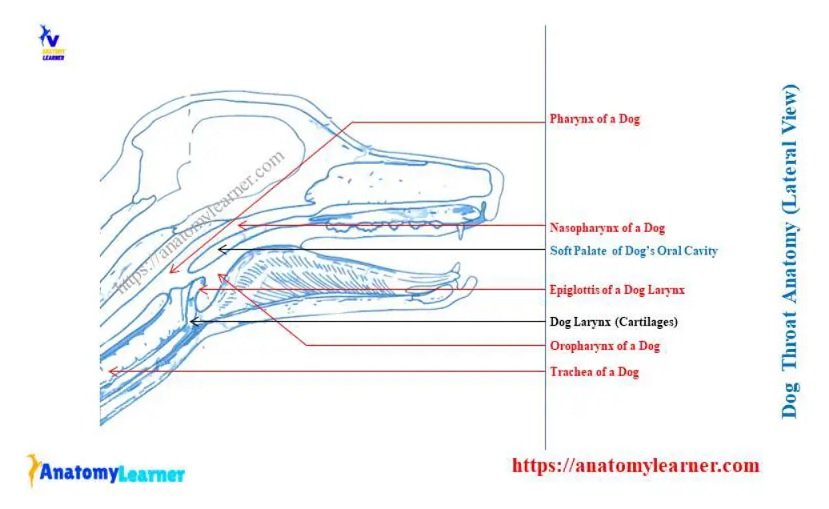
When my chocolate Lab was about 13 years old I noticed his bark was sounding hoarse. I thought he had a cold but after a check up with my veterinarian I learned it was laryngeal paralysis.
I made some changes to his care and lifestyle that helped him live to 17. He even "applied" for a drivers license on his 16th birthday.
Laryngeal paralysis in older dogs
The hoarse bark is a telltale sign of Laryngeal paralysis. Some dogs might have noisy or labored breathing. Others might faint from a lack of oxygen.
When you swallow wrong we often say "it went down the wrong pipe." What happens is the flaps at the entrance to your windpipe didn't close fast enough.
Laryngeal paralysis is the opposite - the flaps don't open fully or sometimes not at all. That can cause several other symptoms such as:
- Noisy or raspy breathing
- Excess panting
- Coughing
- Gagging
- Regurgitating
- Exercise and heat intolerance
- Difficulty breathing
- Tongue or gums turning blue
- Collapse
The larynx – or voice box – is at the top of your dog’s throat. It regulates his breathing and includes vocal cords that make it possible for him to bark, growl, and whine.
This is where we find those flaps that keep food or liquid from entering his windpipe.
Sometimes because of age or injury, the larynx might not open completely. This can restrict your dog’s breathing, especially when excited or playing hard. He might also become anxious, pant excessively, cough, or gag.

What is laryngeal paralysis?
Laryngeal paralysis is common in larger breeds, in dogs over 8-10 years old, and in male dogs. Although many breeds can be affected, Labradors seem to be affected most often.
It is often part of a neurological condition called Geriatric Onset Laryngeal Paralysis Polyneuropathy. GOLPP may cause mild symptoms for years or it can be part of a series of neurological dysfunctions.
Mega-esophagus is one symptom of GOLPP. This happens when food piles up in the esophagus instead of continuing into the stomach. If too much food gets stuck in the esophagus it can cause the dog to vomit. Aspiration pneumonia is another potential problem.
Another neurological dysfunction causes weakness in the rear legs. Often mistaken for arthritis, it’s actually caused by the same nerve problem that causes laryngeal paralysis. Slow leash walks and physical therapy can help weak rear legs.
Currently, there is no cure for GOLPP.
Causes of laryngeal paralysis
A genetic condition can cause laryngeal paralysis, especially in Siberian Huskies, Bull Terriers, Bouvier de Flanders, Great Pyrenees, and Dalmatians. Symptoms often begin in puppies under a year old.
There is also a non-genetic form that is likely caused by a neuromuscular disease. Or it can be caused by trauma, such as surgery, tumors or injuries to the neck.
Understanding the underlying cause is important as it helps guide treatment and care options.
Symptoms of Laryngeal Paralysis
Altered bark
Your dog’s ability to bark can be affected by laryngeal paralysis. It might become hoarse, weak, or even completely silenced. This change in the ability to make himself heard can be troubling for your dog.
Changes in breathing patterns
A change in the way your dog breathes is one of the most common signs of laryngeal paralysis. You may notice an increased effort to breathe, a raspy sound while inhaling or exhaling, and sometimes breathing difficulty. Sometimes it can sound like a goose honk.
When your dog’s breathing is restricted it can cause him to tire easily, faint or in severe cases, to die. Let your veterinarian know if you notice any changes in your dog’s breathing.
Exercise and heat intolerance
Dogs with laryngeal paralysis may have trouble working or playing and might tire more easily. They might need frequent breaks even during regular walks.
They may also have trouble regulating their body temperature which can make heat stroke more likely. Be sure to provide plenty of cool water and shade on hot days.
These symptoms are caused by the restricted breathing. Panting helps cool your dog's temperature, but laryngeal paralysis can prevent him from panting effectively.
Other symptoms can include gagging, difficulty swallowing, noisy breathing, extreme panting, and exercise intolerance. If the larynx can’t close completely, food or liquid might “go down the wrong pipe” causing him to cough.
Diagnosis and treatment
If you notice potential symptoms of laryngeal paralysis, make an appointment with your veterinarian. The visit should include a medical history and a thorough physical examination.
Your veterinarian will likely listen to your dog's chest and throat. He might also use X-rays or a scope with a camera which would require light anesthesia. Sometimes additional tests are needed.
Treatment options can depend on the severity of your dog’s symptoms and his state of health. In mild cases, medical management may be enough to relieve symptoms.
Medications might include mild sedatives to decrease anxiety and panting, which will improve respiration. Corticosteroids can help decrease any inflammation and edema (swelling) of the larynx.
You might need to make some changes such as taking walks in the cooler part of the day. If he's overweight, helping him drop the extra pounds can make it easier to move around without huffing and puffing.
Here is a video of a dog that became anxious at the veterinary hospital and had trouble breathing.
Surgical intervention
In severe cases surgery could be considered. This procedure – often called “tie-back surgery” – permanently tacks open one side of the larynx which allows more air through and improves quality of life. Unfortunately this increases the risk of aspiration pneumonia and choking.
It also means no more swimming because dogs often swim with their mouths open. With one flap always open, he could drown.
After the surgery veterinarians will often prescribe a drug to help food pass quickly through the digestive tract. This helps prevent food from coming back up through the open larynx.
They may also prescribe anti-vomiting drugs for the same reason.
Be sure to check with your veterinarian about the potential benefits and risks to your dog.
Other options
Although there isn't a cure for laryngeal paralysis, there are ways to minimize the symptoms.
You could choose a laryngeal stent implant instead of tie-back surgery. It doesn't require surgery, it's more affordable, and it only takes a few minutes.
Here's one family's story as they struggled to help their dog. At that time most veterinarians didn't know - or perhaps didn't care to know - about using a stent.
Acupuncture has helped manage symptoms. "Two acupuncture treatments four weeks apart were performed with marked improvement of clinical signs over a 6 week period. The patient continues to do well 16 months after the last treatment."
An antidepressant drug called Doxepin seems to help 50-75% of dogs, however it doesn't help with the underlying cause. Also it should not be given to dogs with glaucoma or heart disease. Because this is an off-label use for the drug you may need to sign a waiver before your vet will prescribe it.
The treatment plan should be tailored to your dog’s individual needs to improve quality of life and manage symptoms.
Caring for a dog with laryngeal paralysis
There is no cure, but mild cases can be managed using the following tips:
- Have plenty of fresh water available and a cool place to relax
- Reduce stress
- Provide anti-anxiety medications when necessary
- Use a sedative during exciting or stressful times
- Limit exercise, especially during hot and humid weather
- Use a harness rather than a collar to keep pressure off the throat
- Reduce excess weight
- Provide physical therapy to help rear leg weakness
- Check out ToeGrips if you have slippery floors
- Buy elevated bowls to reduce the risk of aspiration
- If your dog also has megaesophagus, a special chair called a "Bailey Chair" can help your dog sit upright and supported. Gravity helps the food "fall" into the stomach. Experts recommend feeding soft food and having your dog sit upright for 15 minutes after feeding.
Also schedule regular check-ups with your veterinarian. These follow-up visits will give him a chance to check your dog’s breathing, overall health, and response to treatment.
Recognizing and responding to emergencies
For a dog with laryngeal paralysis, problems can quickly become critical.
If you notice severe breathing difficulties, pale gums, excessive panting, or collapse, it can be a life-threatening situation. It’s important to act quickly. Be prepared to seek emergency veterinary care.
Summing up
All dogs with laryngeal paralysis need extra monitoring, some more than others. Learning about the symptoms and treatment options available can help you provide the best possible care.
Work closely with your veterinarian and don't hesitate to seek their guidance when needed. Your care and support can help your dog continue leading a happy life.
NOTE: The information on this website is not intended to replace your veterinarian's advice. This information is intended to provide non-technical information in an easy-to-understand format. The website author accepts no responsibility or liability for how this information may be interpreted or construed, or any actions that might be taken as a result of the information herein.


